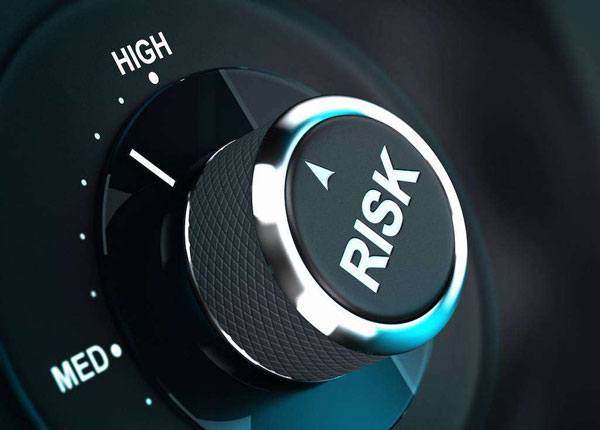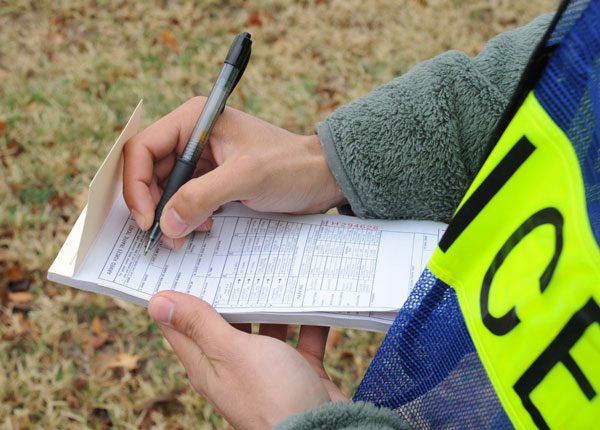
Strategies to Minimize Driving Risk: Controlling Speed & Limiting Distractions
Updated Dec. 15, 2020There is no way to avoid risk altogether while driving, as it is an inherently dangerous activity. Though, you do have the power to influence the level of risk you are exposed to in a positive or negative way. Every decision and action you make while in the driver’s seat will either decrease or increase the risk of an accident or collision occurring. Before following through with any action, you must weigh up how risky you consider that action to be and decide whether the level of risk is acceptable.
If the situation on the roadway is such that risk is about to increase no matter what you do, you should opt for the least dangerous course of action. In circumstances when you must choose either to increase risk or increase safety, it is better to avoid the riskier action, irrespective of what you think you may gain from it.
When considering whether to follow through with a potentially risky action:
- Do not risk a lot for a little (e.g. risking a crash by merging unsafely, just to reach your destination a few seconds sooner)
- Do not risk more than you can afford to lose (e.g. your financial security, freedom or life)
- Always consider your odds – how likely is it that your action will result in a negative outcome?
Not all risks are equal
When considering the likelihood that something bad will result from your risky action and the potential severity of that bad result, it will quickly become clear that very few driving risks are worth taking. If what you intend to do increases the threat of serious injury or loss of human life - no matter how small the chance of those outcomes may be – DO NOT take the risk. As motor vehicles can be extremely effective killing machines in the wrong hands, many driving risks have “death” as a potential outcome. Let’s look at some example risk scenarios.
- 1

Risky action: Increasing speed while approaching a signal-controlled intersection to get through before the light turns red.
Potential gain: Getting to work a minute or so earlier.
Potential loss: Death, serious injury, serious property damage. If another vehicle enters the intersection at the last moment you will not be able to slow down and may hit them at speed.
Should you take the risk? Absolutely not. The chances of a negative outcome are high and getting to work earlier is not worth risking death. - 2

Risky action:Parallel parking in a tight spot.
Potential gain: A convenient parking space and not being late to an appointment by having to search for another spot.
Potential loss: Property damage. At worst, a broken taillight or body damage.
Should you take the risk? If you are a confident parallel parker – yes! If you are a new driver who has difficulty with parallel parking, the likelihood of the “potential loss” occurring becomes greater, so you would be better off looking for a different spot.
Note that many of the most dangerous risks drivers take are motivated by a desire to get somewhere sooner. If we feel we’re going to be late for work, school or some other important appointment, the impulse to speed up, squeeze in or drive aggressively is huge, despite the high level of risk.
Truly catastrophic collisions often result from this kind of behavior. Never let the desire to rush jeopardize your safety. If necessary, allow yourself more time than you think you need to complete a journey.
Where can driving risk be reduced?
The risk posed by other motorists, pedestrians, cyclists and weather conditions is not entirely beyond your control. While you cannot change the weather or alter the behavior of other drivers, you can alter your behavior to make the situation less risky. For instance, you can choose to:
- Reduce your speed
- Obey traffic control devices
- Wear your seat belt
- Limit distractions in your car
- Avoid drinking alcohol before driving
- Keeping your vehicle in good working order
Each of these actions will cut-back the risk posed by environmental factors that are beyond your control. You must also pay attention to your own physical, mental and emotional well-being while driving and before you get behind the wheel. If you are not well enough to drive safely, the only way to reduce risk is not to drive at all.
Risk reduction techniques
Use the tactics listed here to keep the risk-rating of every driving situation as low as possible.
- Obey all traffic laws, always.
- Never drive faster than is safe based on roadway conditions.
- Study! Knowledge of defensive driving techniques and road laws will help to minimize risk.
- Always communicate your intentions to other road users using your lights or hand signals.
- Drive to optimize the flow of traffic on the roadway, not to disrupt it.
- Always yield to pedestrians.
- Always wear your seat belt and make sure your passengers wear theirs.
- Always turn to check your blind spots before turning or changing lanes – do not rely exclusively on mirrors.
- Always scan the roadway 12 to 15 seconds ahead of your vehicle.
- Keep your attention on the road.
- Never text and drive.
- Never drink and drive.
Minimizing the risk posed by inexperience
New drivers are exposed to a heightened level of risk behind the wheel, thanks to their relative inexperience as compared to long-term drivers. Your ability to identify risks, make sensible decisions, control your vehicle, and multi-task while driving will improve gradually with experience. However, you can speed-up the risk reduction process by focusing on your weaker skills and practicing important maneuvers. For instance, you can work on:
- Starting and stopping the vehicle smoothly
- Using proper steering techniques when turning and reversing
- Using evasive steering and braking techniques
- Learning your car’s reference points and using them to determine your position
- Following the proper procedure for checking mirrors and blind spots
Motorists must continually monitor and evaluate their driving skills, even when they become more comfortable behind the wheel. You may develop unsafe habits as your confidence grows – many drivers do. Maintaining a constant, self-reflective attitude and adjusting bad habits as they develop is essential in minimizing risk.




